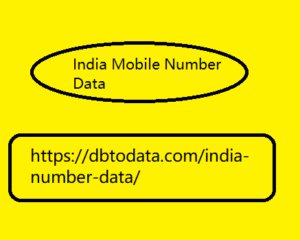Post by account_disabled on Mar 10, 2024 4:08:01 GMT -5
The term metaverse is rapidly entering the vocabulary of lay people, even if it is often used inappropriately. Mark Zuckerberg gave a strong boost to its diffusion when he started talking about it at the end of July and then when he changed the name of the holding from Facebook to Meta , announcing the transformation "from social media company to metaverse company". In October, web mentions of the term metaverse exceeded 3 million. Nowadays the Metaverso label, precisely because it refers to a future to be achieved, is attached to a multitude of different things. It is used to describe gaming environments, to mention digital goods such as NFTs , to talk about augmented and virtual reality.
But the metaverse, at least in the ambitions of the first theorists, should be India Mobile Number Data something more complex, that is, the next evolution of the Internet: a network of immersive, persistent, synchronous digital environments, enabled by protocols, technologies, languages, access devices and new contents. The components of the metaverse and future challenges Will we ever get there? It is not clear why the technological and human obstacles, which few are aware of, seem truly insurmountable. According to Matthew Ball (analyst and investor in technology companies who was among the first to delve deeper), the challenges to be overcome concern hardware, network infrastructure, computational power, platforms, contents, standards, services of payment and, above all, human behavior. I tried to summarize them to try to help clarify. Hardware To fully enjoy the sensorial experience promised by future digital environments we will necessarily need devices dedicated to this (although access in sixteenths will probably also be possible from a browser).

It will probably be the evolution of the input/output devices and viewers that are already used for virtual reality applications. Some companies already offer consumer solutions such as Sony, HTC, Oculus, Varjo, Pimax. The biggest challenges concern increasing the refresh rate and viewing angle, but also the lightness of the devices. Some hardware will only be used to enter the new world, others will be useful for creating realistic objects to use within it. Already today, with an iPhone and an Epic app it is possible to capture one's facial features and transform them into an avatar. Or it is possible to "photograph" physical objects and obtain the digital version (Object Capture function). Network infrastructure The metaverse will only be born if it can rely on a network infrastructure with very wide bandwidth, very low latency and high reliability.
But the metaverse, at least in the ambitions of the first theorists, should be India Mobile Number Data something more complex, that is, the next evolution of the Internet: a network of immersive, persistent, synchronous digital environments, enabled by protocols, technologies, languages, access devices and new contents. The components of the metaverse and future challenges Will we ever get there? It is not clear why the technological and human obstacles, which few are aware of, seem truly insurmountable. According to Matthew Ball (analyst and investor in technology companies who was among the first to delve deeper), the challenges to be overcome concern hardware, network infrastructure, computational power, platforms, contents, standards, services of payment and, above all, human behavior. I tried to summarize them to try to help clarify. Hardware To fully enjoy the sensorial experience promised by future digital environments we will necessarily need devices dedicated to this (although access in sixteenths will probably also be possible from a browser).

It will probably be the evolution of the input/output devices and viewers that are already used for virtual reality applications. Some companies already offer consumer solutions such as Sony, HTC, Oculus, Varjo, Pimax. The biggest challenges concern increasing the refresh rate and viewing angle, but also the lightness of the devices. Some hardware will only be used to enter the new world, others will be useful for creating realistic objects to use within it. Already today, with an iPhone and an Epic app it is possible to capture one's facial features and transform them into an avatar. Or it is possible to "photograph" physical objects and obtain the digital version (Object Capture function). Network infrastructure The metaverse will only be born if it can rely on a network infrastructure with very wide bandwidth, very low latency and high reliability.